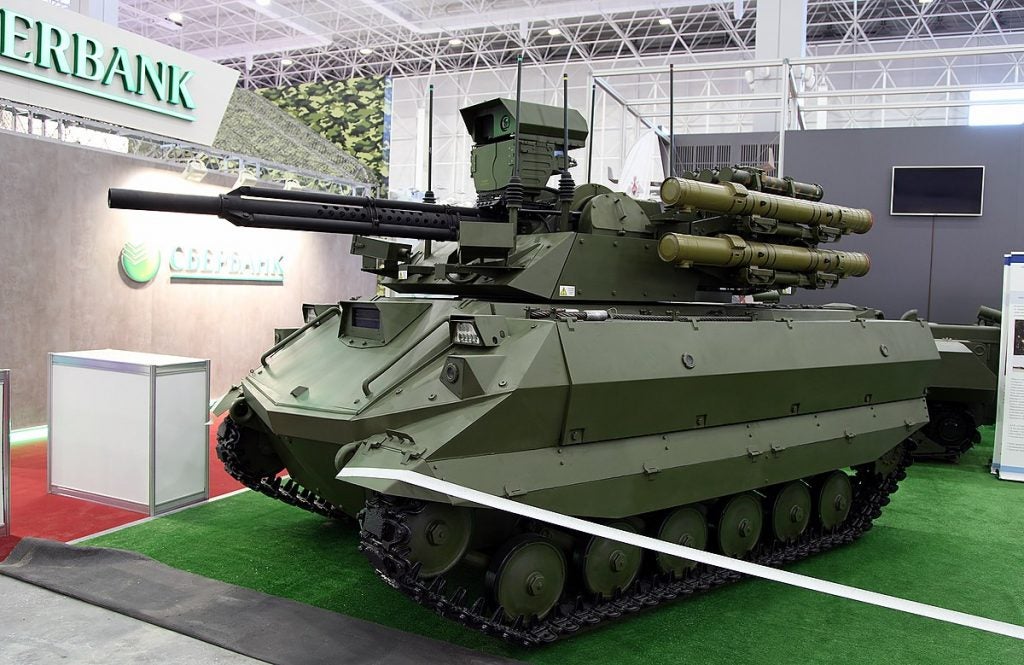Russia’s Killer UGV “Not Able to Perform the Assigned Tasks”
The Russian Uran-9, produced by Kalashnikov Concern, was conceived as an armed UGV or unmanned ground vehicle. The Uran-9 was designed to conduct infantry fire support tasks and armed reconnaissance both in counter-terrorist and conventional warfighting scenarios. The Kalashnikov UGV is heavily armed with a 2A72 30mm autocannon, a PKT coaxial medium machine gun and either four 9M120-1 Ataka (AT-9 Spiral 2) anti-tank guided missiles or up to a dozen Shmel-M thermobaric unguided rockets (also fired from the RPO-M infantry launcher).
A Spanish defense analyst writing under the Twitter handle Abraxas Spa recently released copies of an internal BAE Systems report on the effectiveness of the Uran-9 during the Syrian conflict. According to the report, the Uran-9 suffered from “limited autonomous capabilities if (the) signal (was) lost” and showed only “limited ability to detect, identify and engage enemy forces without manual human intervention.”
Uran-9 live fire demonstration c.2017, (via RT)
A lack of stabilization meant that both sensors and weapons platforms were “useless” whilst the vehicle was on the move. Even when the Uran-9 was stationary, engaging fleeting targets of opportunity common on today’s urban battlefield proved problematical due to “significant delays” when “fire commands were issued”. In summing up, the BAE report noted the Uran-9 was “not able to perform the assigned tasks in the classical types of combat operations.” Furthermore, the unidentified BAE analyst estimated that it would be “10-15 more years before UGVs are ready for such complex tasks.”
Similar comments have been reported in the past with the Uran-9 being reported as suffering from system shutdowns if it exceeded 300 to 500 meters distance from its controller. The issue was further exaggerated by the urban environment in which the Uran-9 was operating within with buildings blocked control signals. A defense science conference in Russia identified further problems with the UGV’s running gear making it poorly suited for urban combat and that the platform’s OCH-4 optical station performed equally poorly and in particular is unable to spot enemy UAVs.
Header Image provided by Courtesy Vitaly Kuzmin CC BY-SA 4.0

